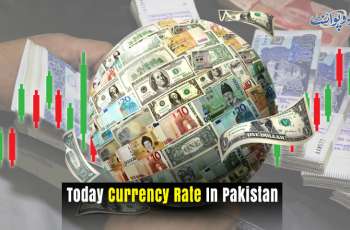US consumer prices grew by 0.4 percent in February, with rising gasoline costs accounting for more than half the increase, the Labor Department said on Wednesday
WASHINGTON (Pakistan Point News / Sputnik - 10th March, 2021) US consumer prices grew by 0.4 percent in February, with rising gasoline costs accounting for more than half the increase, the Labor Department said on Wednesday.
"The Consumer Price Index for All Urban Consumers increased 0.4 percent�in February on a seasonally adjusted basis after rising 0.3 percent in January," the US Bureau of Labor Statistics, an unit within the Labor Department, said in a statement. CPI growth for over the last 12 months was 1.7 percent before seasonal adjustment, it said.
Gasoline prices drove more than half the overall increase, rising by 6.4 percent in February as US pump prices neared $3 per gallon, their highest in 18 months. Electricity and natural gas indexes also increased, driving the energy index up by 3.9 percent, the statement said. Food prices also rose, though by a far less degree, at 0.2 percent for February.
Both the monthly and 12-month readings were in line with the expectations of economists surveyed by US media.
"The real question is how hot prices run when the economy reopens and whether that's a one-off or sustained," Adam Button, analyst at ForexLive, said in a commentary.
Economists have expressed concerns in recent weeks that a US economy liberated by the COVID-19 vaccinations could result in overheating, sending prices of everything from fuel to food spiking.
Moody's Analytics lead economist Mark Zandi warned in a recent interview with CNBC that Wall Street was significantly underestimating the inflation surge expected from President Joe Biden's recovery plan, which he said would affect every corner of industry from big tech to cyclical trades.
Biden's $1.9 trillion "American Rescue Plan" for COVID-19 was approved by the Senate last week and is expected to clear the House of Representatives on Wednesday, paving the way for him to sign it into law.
The bill aims to provide US states with COVID-19 vaccinations and other pandemic-related help; make financial grants for small businesses; aid school reopenings; pay unemployment benefits of $300 weekly and send out one-time checks of $1,400 to most Americans.
There are concerns, however, that employment and wage growth might not keep up with inflation likely to spout from the spending down the road.
Federal Reserve Chairman Jerome Powell said on Thursday he did not expect the United States to return anytime this year or so soon to maximum employment, which will be one the central bank's criteria for raising interest rates. Under the Fed's definition, maximum employment is achieved when the jobless rate is at 4.0 percent or lower. February's US jobs report showed unemployment at 6.2 percent.
The United States lost more than 21 million jobs between March and April, at the height of business lockdowns forced by the virus. At least 10 million of those jobs have not returned, with the US economy shrinking 3.5 percent in 2020 after a 2.2 percent growth in 2019.




